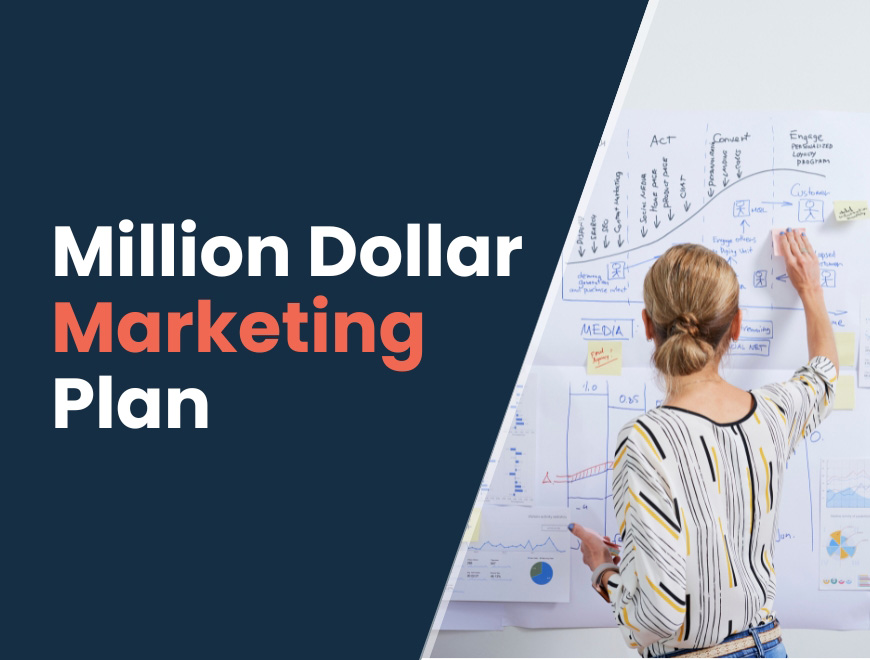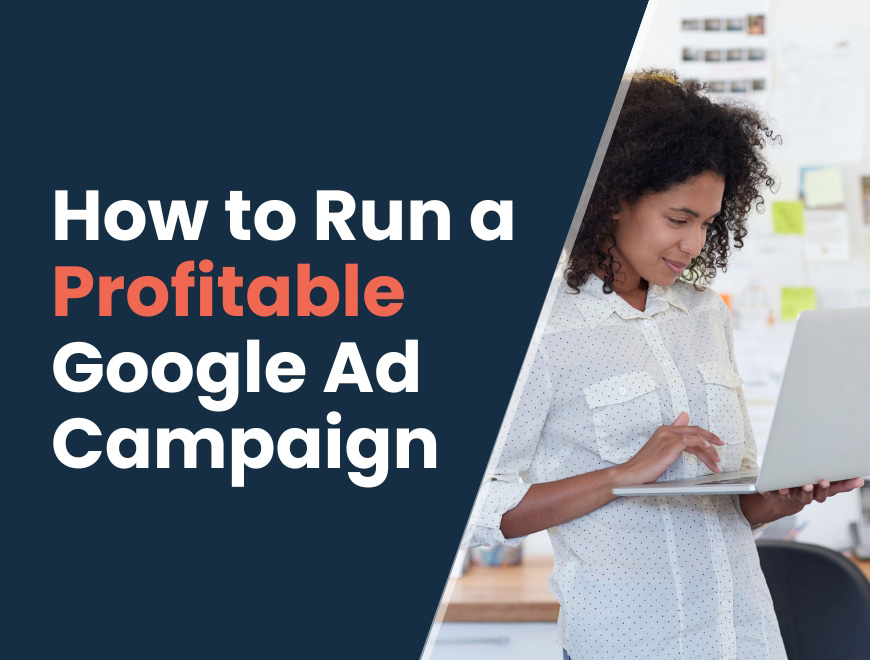The rule of three ones. This is something I’ve picked up along the way in my marketing life. It comes down to getting one thing working before you start another. I’m going to share with you how this works in terms of your marketing.
The Simplicity Of Doing One Thing At A Time
Over the years, many clients have come to me with grand ideas of making multiple marketing strategies come to life. I remember one client who contacted us through one of our marketing channels.
We had a chat. He was running a law firm and wanted to get started with lots of new marketing. He wanted to do SEO as the SEO campaign with their existing agency was falling flat on its face. He wanted to run a Google ads campaign and social media, too.
Print ads. Radio ads. He asked me what I thought about television, as he wanted to run some ads on some TV. And I just stopped and asked him, ‘What’s working for you at the moment?’
He thought about it briefly and replied, ‘Nothing, none of it is getting us any leads’. He said that word-of-mouth referrals were their best source of incoming work, and their marketing wasn’t achieving anything overall.
“So I said,’ Well, why don’t we just start with one thing, we’ll get that working – and then we’ll go from there, and we’ll add the next thing?’ ”
He wasn’t sold on that idea, countering that he felt their marketing needed to expand across multiple channels. He wanted to go all out. I told him this would be expensive and take time to establish. I explained that creating marketing that works across multiple channels and unique target audiences at various stages of their buying cycle would require a lot of work.
Marketing Reality – First Campaigns Rarely Succeed
I made it clear to this guy that doing it the way he wanted to would take a lot of effort and input, and that he’d need to be closely involved to give feedback early on about what he liked and didn’t like. I told him that if they didn’t all work from word go, there would be a heap of additional work to optimise it all.
“Going broad can work brilliantly or waste a lot of time and energy if initial campaigns miss the mark.”
One thing I learned while working in the US is that you’ve got to put in a lot of work with marketing over a long time. Very rarely does the first campaign you send live work, very rarely. Typically, you’ll send something live and you might get a few nibbles or a bit of traffic. It might not convert, or it may convert at a really low number. From there, you have to start working on the campaign variables – improving each stage to create better results.
Simplifying With The Rule Of Three Ones – A Blueprint for Marketing Success
Even still, this guy asked me for a quote for all of it. I told him we’re not the right agency for him. The way he wanted to approach this wasn’t the best way to do so, and I didn’t think it would work. I think he would have spent a ton of cash and ended up in a world of pain because he had too many irons in the fire. He would have no time to optimise, and there was no guarantee any of it would work because none of his marketing was working at the time.
I told him what I felt would work. First, developing a better offer. Next, a better story. Let’s test some hooks and do all the groundwork to make one channel work.
The rule of three ones is having one traffic source, so one channel, sending it to one page with a great story and having one offer that meets the needs of your target audience.
“One traffic source, one landing page, one offer. Right? That’s it. That’s all we want to focus on and get right before adding another channel or any additional complexity.”
I’ve learnt that if you can’t get one channel and one campaign right, the chances of running three and getting one of those three right is very remote. I truly believe you need to start by focusing on one channel – a single traffic source and send it to one landing page, with one offer. It’s the easiest way to get early data, and to test the market. The chances are that it’s not going to work perfectly the first time you send it live.
What you will have though, is a campaign that’s small enough to easily optimise. You can test different hooks and different stories. You can reframe things a certain way, you can test various offers on that one page, and when you find something that works and you get that dialled in, then just scale that channel.

From Small-Scale Testing To Campaign Scaling – A Strategic Approach
You might approach it like this. If one sale is worth $5,000 to your business, the objective of your first campaign is to get one sale and generate $5,000 worth of revenue for your business.
How much should you invest? You should invest $5,000 – or whatever the amount of money you would generate from one sale – into a marketing campaign as a test. Essentially a break-even scenario. Factor in any expenses, profit margins and whatever else. The rule of thumb is however much your first customer is worth to your business, that’s how much you should invest in your first campaign.
“Google Ads are an effective place to start because they bring you warm traffic. The people clicking on them are actively searching to solve their problem.”
They’re taking steps towards a purchase and have identified themselves as ready to solve their problem. They are searching for what they need on Google instead of passively scrolling social media.
So, step one, create a Google Ad. Have a few different hooks in your ads, and look at creating two or three different ads with different hooks. A hook is just the headline of an ad.
You need to come up with something that’s going to hook your buyers so when they see a bunch of ads, your ad is the one that stands out – because you’ve got the best hook. Your Google Ad will hook readers and bring them to your landing page.
Now test. If you have a Google Ads campaign with a $ 5,000 budget, test a couple of different hooks – create a couple of different headlines with a couple of different descriptions, and then send them all to one landing page.
Creating Landing Pages That Convert
Your landing page needs to be structured to tell the story of what you’re selling and how it benefits your customer. The copy should help overcome some of the most common objections they will have while also addressing frequently asked questions. You need to cover all of this on your landing page and have an offer on that page that connects with what your audience wants.
“The offer needs to demonstrate that you know what the customer wants. You understand the hesitation and the risk in making a purchase decision as a consumer. Your offer is just a very, very low barrier to entry.”
The offer could be anything. If you’re a professional services firm, maybe it’s a free one-on-one consultation for half an hour where you talk strategy. If you’re selling a product, it might be a free sample. Some sort of offer that helps get them into your world and gets them transacting with you – this is why you start with a good offer.
You might have another product or service that will appeal to your audience. If you’re a plumber or an electrician, maybe it’s ‘no call-out fee for first-time customers’. Save yourself $150, whatever the amount is. This type of offer makes the reader say to themselves, ‘This is great. I’m going to call this person now’ because they know there is minimal risk in engaging someone to come out and quote or have a quick chat on the phone.
The Formula for Success = Traffic + Landing Page + A Great Offer
So, to make it work, you’ll need a good traffic source with some attention-getting hooks, directed to a solid landing page. Your page must present a compelling story to help your reader overcome their buying questions and objections. And then, at the end of the page, you’ll have an excellent offer that reduces risk for your customer. It makes it easy for them to buy or potentially start doing business with you. These are the campaign elements that you’ll need to test.
You’ve built your campaign based on all of the information and knowledge you have and any advice you’ve been given. You put your best foot forward, and you send your Google ad campaign live. The landing page is live. You’ve made sure that the offer is set up so that you’ll be notified the moment someone claims it. You’re going to answer your phone immediately. You’re going to get back to leads immediately, all that basic stuff that you should be doing as a business owner – while you test elements of your campaign.
“The truth is, your campaign probably isn’t going to work that well, round one. You may or may not make a sale, but you will have data to work with at the end of this exercise.”
You might think, ‘Well, if I’m spending five grand, how long will this take to test?’ And that depends on how much the cost per click in Google Ads is for your market and how many clicks you’ll get with your budget. You might run it for two weeks or maybe for a month.

Ensuring A Winning Hook, Story and Offer
I like to run a campaign for around 100 visitors to get a good sample size of people visiting a website. Even 50 visitors give some insight. If 50 or 100 people have ended up on your landing page, but none have converted by taking up your offer – there is a problem. It will either be with the story or with your offer.
It’s not a problem with the hook in this scenario because people came to your site, but they didn’t convert. If no one’s coming to your site after you send Google Ads live, and your click-through rate (the percentage of people that see your ad vs. how many people click on your ad) is super low, like less than 1%, well, you know, there’s probably an issue with the hook.
“You should aim for somewhere between 3% and 10% click-through rate. This will vary depending on your industry and other variables. 10% is a fantastic outcome, though.”
Remember that only 10% of people will click on a Google ad, and the other 90% will click an organic search result from the search results page. People will click an ad because they know it’s an ad and want to buy something, or they will avoid it in favour of organic results – often because they aren’t actively seeking a solution yet.
Either way, a lot of people will skip over your ad. But people who are ready to buy will generally click an ad. You need to look at how many people saw your ad compared to how many people clicked the ad. If it’s a good number, you will know that the hook is working to bring people to the site, but the site’s not converting.
Is it a story issue, or is it an offer issue? You only want to test one campaign element at a time; otherwise, you won’t be able to attribute changes in your campaign performance. I wouldn’t test or change both at the same time. I’d recommend starting with the offer because a fantastic offer can overcome a shitty story, but it’s challenging the other way around.
Review, Recalibrate And Get Your Campaign Dialled In
Look at your story, look at your offer, start there and test stuff to get your campaign dialled in. Once it’s dialled in, ramp up your ad spend, because you know it’s working. Invest as much as you can into scaling that ad – because once you get it working, you might as well maximise it and spend as much money as possible.
Ideally, you want the average transaction value and the number of sales you make to be way more than the amount of money it costs you to get those sales.
“Once your ad is working, you can generate more money than you’re investing into the marketing campaign – and it makes total sense to just scale it up.”
So you can ramp up your Google ad spend to as much money as possible while it’s profitable. Then, when you are throwing so much money at it, and Google won’t take any more money from you because you’ve maxed out that channel, you can start thinking about the next step. You’re getting all the traffic from that channel, so it’s time to explore your next marketing campaign.
Now That You’ve Mastered One Channel, You Can Take The Next Step
Once you know you are getting everything you can from your Google Ads campaign, you can think about a new channel. I’d say that for most businesses, the next logical step is to begin an SEO campaign. You now have all of this data around which keywords are working and what people are searching for. You already know you have a ‘Hook – Story – Offer’ that’s working and converts.
You can start building new pages or optimise your landing pages to organically rank number one in Google. This will allow you to get a lot more customers coming to the site at almost no cost – because you don’t have to pay Google every time someone clicks on your website.
“Again, don’t divert from this strategy or add another channel until you get that second channel working, optimised, and delivering the result.”
When your second channel is working well, you can add social media, email marketing or whatever else is on your list. Get one marketing campaign dialled in before adding the complexity of multiple marketing campaigns. That’s my advice. So that’s the rule of three ones – one traffic source, one landing page with a good story and one irresistible offer.
Get that working before you do anything else.




